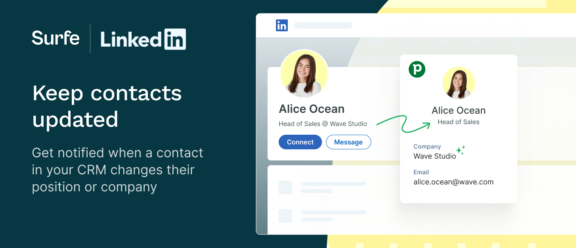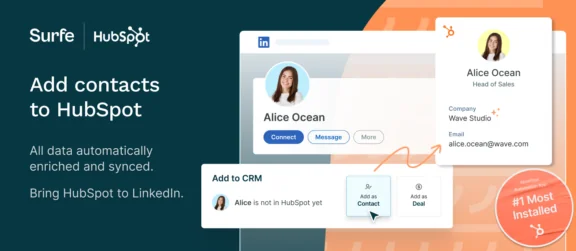Why Your Sales Playbook Needs Real-Time Market Data

Let’s play a game. When we say “sales playbook”, you say…
“Couldn’t live without it!”
Not quite right? Let’s try again. When we say “sales playbook”, you say…
“Er…I think I last read it during my onboarding?”
That’s more accurate, right? Here’s the thing: sales playbooks are really important. But a lot of the sales playbook templates out there don’t include one essential thing. Real-time data. And that dramatically reduces how useful they actually are in the real world.
Sales people are busy people (not that we need to tell you that). Just 39% of their time is spent selling. The rest is spent on deal management, prospecting, admin…the list goes on.
Your sales playbook may contain some useful processes to follow, sure. But if a lot of it is based on what worked in 2019, we’ll guess that you simply don’t have the time to rely on it. After all, you’re hardly going to be fact-checking every sales methodology in there, are you?
Before you write sales playbooks off for good, though, there is another way. And this way involves real-time data. The best sales playbooks make use of this data to keep processes, decisions and prospect relationships up-to-date.
In other words, they stay relevant. Think of a good sales playbook as the Beyonce of the B2B sales world.
Here’s what we’ll be covering today:

What is a sales playbook?
First up, let’s go back to basics.
A sales playbook is a document that outlines everything a sales team should do to close deals. Think of it as a very detailed instruction manual for your job.
It should cover every stage of the sales process – from prospecting to closing a deal – and describe what you should do in every one of these stages.
A good sales playbook should eliminate the time you spend searching for data entry best practices, or how to handle a common objection. Instead, it will speed up onboarding new reps, increase conversion rates, keep the team aligned (which translates into a smoother customer experience), allow successful strategies to be shared, and make finding information faster.
Sales playbooks typically include:
- Buyer personas (in other words, what your target customer looks like)
- Stages of the sales process and workflows
- Call scripts to follow – for example, objection handling scripts – for every use case
- Sales plays
- What sales enablement tools your business has to make your life easier
- Key performance indicators – so you can see how you’re doing
- The wider business strategy, its value proposition, and what role you play in it
The Importance of Real-Time Market Data
Now we’ve covered what a sales playbook looks like, let’s take a look at what turns a good sales playbook into a great one.
Time for real-time market data to enter the chat.
Real-time market data refers to data that’s continuous – or in other words, always up-to-date. Let’s take a look at some data examples:
Industry trends: is your industry getting a lot of funding? Has a new piece of legislation passed that will change how businesses work?
Competitor activities: has your enemy (ok, your competitor) changed its pricing? Are they going after a new segment of the market?
Customer behavior: what are common objections your customer will have? What customer needs do most of your prospects have?
A quick note on how real-time data differs from static data. These two are like day and night. Chalk and cheese. Black and white. While real-time data is always changing and up to date, static data remains constant over time.
The impact of real-time sales playbook data on decision-making and sales agility
Let’s imagine two sales reps here.
Sales rep one (we’ll call him Bill) is following a sales playbook written in 2019. 2019, if you remember, was a glorious time: none of us knew what covid was, there were record levels of tech investment, the weather was warm…
Sales rep two (we’ll call him Ben) is following a sales playbook enhanced with real-time market data. That means it’s the sales playbook of 2024. It definitely knows what covid is and it’s aware of current market conditions. Maybe it can even tell you the weather.
Bill makes a sales call to a prospect using a best practice email template. This template references the amazing market conditions and implies now is a great time to invest in the product he’s selling.
Ben reaches out to the same prospect, also using a best practice email template. This email template doesn’t mention the market conditions, but it does mention a new piece of legislation that his product is designed to help with.
Guess who gets a reply?
Next up – how do we actually get real-time data into our sales playbooks?
Integrating Real-Time Market Data into Your Sales Playbook
Common methods for gathering real-time market data include:
- Social media monitoring: for example, keeping an eye on promotions and job changes on LinkedIn
- Market research tools: use a tool like Similarweb to find out what’s happening in the market
- CRM analytics: for example pulling sales data from your CRM to find out your average deal size, or sales cycle length
Once you’ve got your data, you’ll need to analyse it. One of these techniques might float your boat:
- Segmentation: dividing your contacts into groups, and then finding behaviour trends or pain points within these groups
- Trend analysis: using historical data to predict what’s going to happen in the future (or, you know, tomorrow)
- Cross-referencing: using multiple data points to paint a clear picture of what’s working, and what’s not
Now it’s time to implement your data. This might look like:
- Updating sales scripts: making sure your scripts all follow templates that reps have seen success with, or adding in a common Q&A that’s coming up a lot
- Refining buyer personas: incorporating new behaviours based on qualified leads insights, or noticing that the decision maker’s more senior today than they were two years ago
- Refreshing templates: adding a new LinkedIn outreach template with a big success rate, so other team members can use it too
The benefits of a data-driven sales playbook
We’re assuming you’re already sold on the idea of a data-driven sales playbook – but just in case you’re not…
As Bill and Ben demonstrate above, real-time data makes sure that your whole team is super responsive to what’s happening in the market.
It also speeds up your prospecting: in particular, your targeting and personalisation efforts. The more data you can add to your playbook, the better idea you’ll have of who your ICP is and what they’ll want to hear from you. Plus, by keeping on top of changes like promotions and job moves, you’ll always have a reason to reach out.
The faster you can prospect, and the less time you spend searching for sales tools and templates (because it’s all in one place), the more efficient you will be. That’s less time on admin and more time on what you’re good at – selling.
Tools and technologies for real-time data integration
Ok, we’re sure you’re convinced now – but isn’t integrating data into your effective sales playbook a huge amount of work?
Nope.
There are loads of tools that can speed up – or even automate – the process for you, meaning your sales playbook will be up-to-date without you having to lift a finger. Some star players include:
ICP and messaging insights: Surfe
Oh hello there! Surfe provides real-time insights on your ICP, meaning you’re always up-to-date. For example, you’ll know as soon as a contact gets promoted, or changes jobs.
Another feature we love is the ability to see what messages work best. Surfe analyses your LinkedIn outreach efforts to determine which of your templates get the most love (and conversely, which do not) and puts it all in one easy-to-visualize report.
You can then share those templates with your colleagues – and swiftly update your sales playbook. The best part? Surfe also integrates with Pipedrive, Salesforce, HubSpot, Copper and Google Sheets, so all these insights will appear in your CRM like magic.

Market research: Similarweb
Similarweb lets you build a personal view of your industry, so you can have a bird’s eye view of exactly what’s happening in real time. It’s particularly handy if you’re launching a new product.
It’ll give you a great view of macro trends and how the past is influencing the present (spooky) as well as what all the major players in your world are up to. By building your personalised report, you’ll get instant insights built specifically for your unique sales playbook.
As with any good real-time data tool, Similarweb integrates with popular CRMs like Salesforce, so all your data can be pulled to where you need it.
Customer behaviour: Hubspot
We’re sure you’ve heard of this one 😉Hubspot lets you track website visits (amongst many other things) on both an individual and macro scale. This means you can find out who visited your book a demo page yesterday, and how many visitors it got over the last month, or quarter.
By using web analytics, you can track customer behaviour further down the funnel, and use the data gained to inform your sales cycle and more. You can build a personalised dashboard on Hubspot to view it all in a couple of clicks, too.

Tools and technologies: best practices
Fizzing with excitement to go out and choose your new real-time data tool? Hold on a second. We’ve got some best practices to share when choosing a tool:
- Search for quality and variety: you want a wide range of reliable data sources, as well as different types of data like qualitative, quantitative and so on. Don’t forget to check how old the data is too.
- Integrations: as we’ve shown, your tool really should integrate with your CRM. Manual data entry? No thanks.
- Keep analysis and visualization in mind: sure, your tool might have a load of data for you – but is it in a huge Excel or an easy-to-interpret dashboard?
- Collaboration: does your tool let you work together with teammates? Take Surfe letting you share top-performing templates, for example. In-platform collaboration should be a gold standard.
- Compliance: we’re sure we don’t need to tell you this, but make sure the data you can access is above board.
- Scalability: if all goes to plan, you’ll be using your data-enhanced sales playbook to skyrocket your sales and grow your business. What’s the point of choosing a tool if in a year you’ll have to choose another one? Tip: make sure that increasing the number of users isn’t going to result in a scary price increase, too.
- Support: the biggest nerd tech whizz in the world can get stuck sometimes. Make sure there’s a decent support and customer success team on hand to make sure you’re getting bang for your buck.
Best practices for maintaining an up-to-date sales playbook
That’s nearly it! Before we wrap up, let’s quickly touch on best practices for keeping your sales playbook up-to-date. Keeping your real-time data as real-time data, in other words.
- Regular reviews: make sure to have it in your diary to regularly review your market data. If you’ve followed the tips above, it should be easy and quick to interpret. Cross-reference with your playbook, and make any changes accordingly.
- Continuous training: don’t just leave sales playbook training to onboarding new hires. Run regular sessions with the rest of your team to make sure everyone’s using and benefiting from it in the same way.
- Feedback: think of your playbook like a sourdough starter. It has to be tended to and maintained – and a job like that is best done by a group of people. Encourage everyone – not just sales managers and sales leaders – to take an active part in making the playbook the best it can be with updates, changes and insights.
Overcoming Challenges in Data Integration
Integrating data done well is easy. But do it badly, and it’ll soon become difficult.
Make sure you’re being super selective about what data you’re using. In other words, don’t rely on every stat under the sun – it’s just going to make your playbook confusing, not clear. You want clear reasoning for why you’re relying on each data point, and what value it adds.
Rely on manual data entry, and at some point you’re probably going to be relying on an incorrect stat. There’s just too much room for human error. Our take? Don’t even bother with it – choose a tool that will do the hard work for you instead.
You’ll also want to make sure this tool integrates data well. That means not inputting duplicate data, and making sure the process is as smooth and seamless as possible. We’re talking instant integration, not fiddling around with a CSV and accidentally inputting the wrong column.
This can be a lot to manage – best practice is to have a dedicated team (if your business is big) or person (if your business is small) to manage all things data cleanliness.
Let’s wrap it up!
It’s no longer enough to say that you have a sales playbook. All that will get you is a slow clap.
If you really want to stay ahead of the competition, you need a sales playbook that’s a living, breathing source of data-driven insights. Something your team can jump into and find what they need in seconds.
The result? Smoother, faster sales that elevate your whole team to a top-tier level. Yes please.

Make writing sales playbooks a breeze
If only there was a way to seamlessly gather data, input it into your CRM, and use it to inform your sales playbook…oh yeah, there is. Download Surfe today (it’s free!).
FAQs about why your sales playbook needs real-time market data
What is in a sales playbook?
A sales playbook is a vital component of every high-performing sales team. It outlines every stage of your sales strategy and process from lead qualification to closing the deal. A user should come away from reading a sales playbook understanding who you’re selling to, what this sales funnel looks like, what to say to them, what tools and tech you should be using to help you, and key performance indicators (KPIs) for your business.
What does a sales playbook include?
A sales playbook should include the following sections:
- Your ICP, or buyer personas and what their profiles typically look like
- How many stages your sales process has, what it looks like and how long it takes
- Scripts for every type of phonecall, what discovery questions to ask, templates for outreach and follow-ups
- Logins and instructions for every piece of technology your business uses to help the sales process
- Key metrics for sales individuals and teams
- The wider business strategy, its elevator pitch and how sales fits into it
How to create a sales playbook?
Follow these tips to create a sales playbook your team will be using in years to come:
- Map out what your sales process currently looks like. Include every detail, from persona mapping, to prospecting, to discovery calls to closing the deal
- Collaborate with your marketing team to make sure their unique insights inform the playbook
- Use real-time data tools to pull insights that can inform your sales playbook
- Include information and instructions for tools that your sales team will use to help them with prospecting, pitching, closing and more.
What is a deal playbook?
A deal playbook is a section of your sales playbook that details everything your sales team should know about the deals your business closes. This includes everything from deal size, what sales team members need to do to guide prospects through the process, access to legal documentation and what processes need to be followed internally to ensure the success of the deal.
How can a sales playbook improve team performance?
A data-enhanced sales playbook can improve team performance in the following ways:
- Speed up prospecting: by including information on buyer personas and templates to use for outreach, sales reps can use their playbook to streamline the prospecting process
- Improve client relations: data-led sales playbooks will include up-to-the-minute insights which sales reps can use to inform and guide their conversations
- Handle common objections: by tracking prospect anxieties, playbook authors can explain how to handle client objections and make sure the sale completes
- Support using tools: a sales playbook should have logins and instructions to all the tools the team uses to make their jobs easier. Having all the information in one place means the team can spend less time searching for information and more time selling
- Improve onboarding: make sure new salespeople know exactly what they’re doing from the get-go


